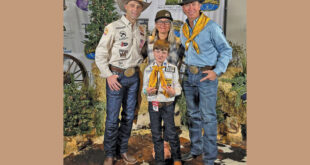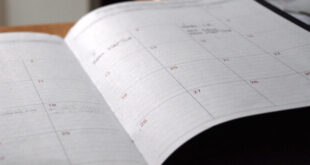Part 1
From its inception in the mid-20th century to its demise in 2008, the Western State College (WSC, and now Western State Colorado University, WSCU) Ski Team churned out formidable winter Olympians. In every Olympic year for 50 years, from 1956 through 2006, at least one ski athlete represented WSC.
WSC was unique in having several ingredients that were absolute necessities for producing those Olympians. The administration understood the college’s potential for producing Olympians, which translated into more prestige, honors and recognition. Western State once touted the best training facilities, program and snow of any college.
Immediately following World War Two, there were four 10th Mountain Division athletes participating in the ski team program, particularly Crosby Perry Smith. These soldiers were trained to fight and survive under the most brutal mountain conditions. The WSC Ski Team received the all-important varsity status in 1947. At the time, the college president was P.P. Mickelson, a man of Scandinavian descent who understood snow sports. Paul “Frosty” Wright was the athletic director.
According to Paul Hooge, Ph.D. and ski historian, “You have this Scandinavian president from Minnesota, an athletic director whose name is Frosty, and a group of 10th Mountain Division guys who were given the ability by the administration to choose their own coach, and all the planets were lining up. They chose Sven Wiik, a Swedish immigrant who spoke almost no English but got the coaching job by doing a demonstration of gymnastics. He was on the Swedish gymnastics demonstration team but he was also a cross-country ski coach in Sweden.
“The team realized,” continued Hooge, “that this was the guy who could take them to the next level because he could teach them about cross-country skiing, jumping and training methods, which he was extremely good at.”
Hooge explains that the interesting and difficult thing about being a collegiate ski athlete in that period from WWII through the 1960s was that you had to be skilled in all four events: cross-country, ski jumping, slalom, and downhill. There were very few athletes who were good in all four events. Each individual was usually better at one.
Judges added up the score for all of the skiers in all of the events, to come up with a total team score and that was the score that counted. Sven Wiik took the talent he had and turned them into a nationally competitive team at the collegiate level. It was both Nordic and alpine, but the strongest component of the team then was cross-country. For the Olympics, WSC dominated the cross-country events in the 1950s because of Wiik and his training program.
Mack Miller was already a Junior Nordic Champion when he arrived at WSC. Hooge feels he was, without a doubt, the best collegiate cross-country skier in America in the 1950s. He came to WSC because of the school’s coach, program and training facilities and, of course, the snow. He made the Olympics in 1956 and again in 1960.
Olympian Lynn “Buck” Levy was from Louisiana and had never skied or even seen snow before he arrived at WSC. Arriving on a football scholarship as quarterback, he became intrigued by the cross-country skiers, so he asked Wiik if he could borrow a pair of skis and go out to train with the team. Once on the snow, Wiik recognized that Levy was going to be a hell of a Nordic skier. The following year, Levy made the ski team and quit football.
In the late 1950s, the Olympic committee added a biathlon event. The U.S. Army was put in charge of the U.S. biathlon team for the Olympics—once qualified, you had to join the army. Olympic trials in 1959 for the team were at the site of Camp Hale where the 10th Mountain Division once trained. Athletes came from all over the country to try out for the team.
The WSC ski team took first, second and third places, dominating the tryout events. At least three of the college team members qualified and joined the army (and just because you made the trials and joined the army didn’t mean you made the team). The team was then selected from all the military athletes who participated in the trials.
John Burritt and Dick Mize made the U.S. Nordic Biathlon Team. Additionally, Mack Miller made the U.S. Nordic Olympic Team that same year, and Steve Reishl was jumping, so four Nordic skiers from WSC made the U.S. Olympic Team in 1960. John Burritt took 14th place in the biathlon, only because there was an uncontested dispute about bullet size that would have officially put him in 11th place. Still, he held the American record that stood for 40 years. Another WSC ski athlete, Josh Thompson, a three-time Olympian in 1984, ‘88, and ’92, finally broke Burritt’s record.
Hooge says collegiate skiing is one of the only avenues for competition for post-high school kids who want to continue competing without trying to get onto the U.S. National Team. Some of the best coaches in American skiing come out of the collegiate programs—vitally important, Hooge says, because “How do you train your next generation of Olympic skiers if you don’t have good coaches?”
The current coach for the U.S. Olympic Alpine team is Sasha Rearick, a WSC graduate who was an assistant coach for the college’s men’s alpine team and a coach at Monarch ski resort while he was still a student. He’ll head the men’s Alpine team next month in Sochi. Hooge strongly feels that without a varsity program it’s almost impossible for WSCU to produce ski Olympians today. He feels the rich Olympic ski history of WSC has probably ended because of a lack of support from the institution.
Next week, we will look at some of the other Olympians that came out of Western…
 The Crested Butte News Serving the Gunnison Valley since 1999
The Crested Butte News Serving the Gunnison Valley since 1999


